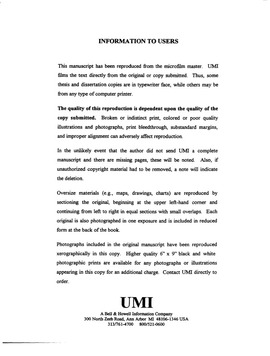| dc.contributor.advisor | Schlegel, Robert E., | en_US |
| dc.contributor.author | Madala, Deepak Srinivas. | en_US |
| dc.date.accessioned | 2013-08-16T12:30:22Z | |
| dc.date.available | 2013-08-16T12:30:22Z | |
| dc.date.issued | 1998 | en_US |
| dc.identifier.uri | https://hdl.handle.net/11244/5738 | |
| dc.description.abstract | Abdominal belts are widely used by the manual material handling industry as a quick fix to work-related back injuries. The use of belts has increased despite the absence of definitive research findings that support belt use. NIOSH, in its review of scientific research, advises against the use of belts by workers with compromised cardiovascular systems. This conclusion was apparently based on the results of a single study that investigated the effects of a weight-lifting belt. The results of an earlier study (Madala et al., 1997) suggested that the effects of the flexible industrial-type belt were unlike those of the non-flexible weight-lifting belt. This study also indicated the existence of a threshold workload at which belt use may be physiologically beneficial. | en_US |
| dc.description.abstract | The current study investigated the effects of belt use in a symmetric knuckle-to-shoulder lifting task at three workload levels. Workload levels were set as percentages (40%, 60%, and 75%) of the subject's individual peak oxygen consumption rate. Physiological measures observed in the study were oxygen consumption rate (VO2), heart rate (HR), respiration rate (RR), ventilation rate (VE), and blood pressure (BP). The results of this study indicated that belt use results in lower physiological responses compared to the no-belt condition. These statistically significant results (alpha = 0.05) were observed primarily at the 60% workload for VO2 , HR, and VE. The belt effect was also significant for the RR response at 75% but was not significant at any workload for blood pressure. | en_US |
| dc.description.abstract | The results of this study illustrate the existence of workloads for which belt use may physiologically benefit the user. However, these results must be viewed cautiously since the workload required for positive belt effects is higher than what is normally recommended for repetitive manual material handling tasks. | en_US |
| dc.format.extent | xi, 195 leaves : | en_US |
| dc.subject | Back Wounds and injuries Prevention. | en_US |
| dc.subject | Lifting and carrying Safety measures. | en_US |
| dc.subject | Engineering, Industrial. | en_US |
| dc.subject | Health Sciences, Occupational Health and Safety. | en_US |
| dc.title | Physiological effects of abdominal belt use during a symmetric lifting task. | en_US |
| dc.type | Thesis | en_US |
| dc.thesis.degree | Ph.D. | en_US |
| dc.thesis.degreeDiscipline | School of Industrial and Systems Engineering | en_US |
| dc.note | Source: Dissertation Abstracts International, Volume: 59-11, Section: B, page: 6018. | en_US |
| dc.note | Adviser: Robert E. Schlegel. | en_US |
| ou.identifier | (UMI)AAI9911871 | en_US |
| ou.group | College of Engineering::School of Industrial and Systems Engineering | |
